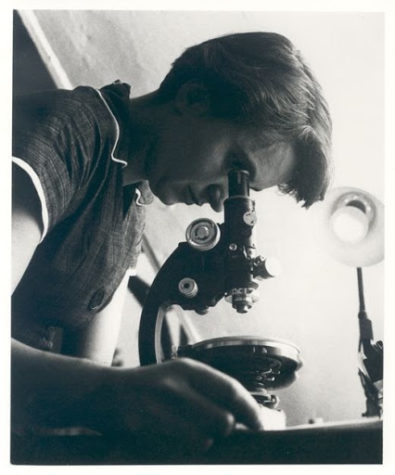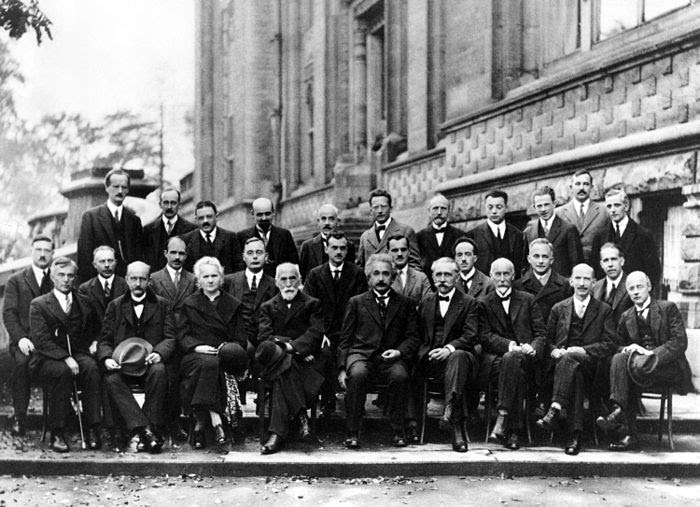Why STEM remains a “boys’ club”
May 19, 2021
In the extended essay, “A Room of One’s Own”, writer Virginia Woolf makes a claim that even if William Shakespeare had a sister who was “as adventurous, as imaginative, as agog to see the world as he was”, she would still not be sent to school and would have “no chance of learning grammar and logic.” This is because, according to Woolf, “A woman must have money and a room of her own if she is to write fiction.”
This proposition that the cultural, educational, and economical obstacles within the patriarchal system prevents women from reaching their full potential still holds true today, especially for women in fields of science, technology, engineering and mathematics (STEM). In other words, a woman should live in a world where there are no masculine stereotypes about STEM, where their work is credited, where they have an equal opportunity in hiring or promotion, where they do not have to fear being sexually harassed, and where they have equal pay. We have entered into 2021 and women are still asking for the same thing they have been asking for since 1929 when “A Room of One’s Own” was published.
It has been 118 years since Marie Curie earned the title of the first woman to be awarded the Nobel Prize in 1903. With only 24 women following her lead receiving the award in the field of physics, chemistry, medicine and economics compared to the 685 men who have been awarded, we may collectively agree that there is a room for improvement. When Per Lunnemann, Mogens H. Jensen and Liselotte Jauffred, researchers at the Niels Bohr Institute, investigated if the gender distribution of Nobel Prizes simply reflects the gender ratio in scientific fields, Jauffred said in a NPR Short Wave podcast that “it turns out that it’s not at all like that.” Apparently, even when the historical gender ratios are taken into account, “Nobel Prizes include a bias against women with more than 96% probability.”
The Nobel Academy has admitted to their under-representation of women and BIPOC (Black, Indigenous, People of Colour) scientists among laureates in 2018 and introduced measures they hoped would tackle this issue including: more female nominators, expressing that nominators should consider diversity in gender, geography and topic in their choice. However, since nominators and their nominees cannot be revealed for 50 years after its ceremony, it is impossible to know if these measures are effective, and the number of women who actually get considered.
This gender bias applies to other prestigious science awards as well, such as the Albert Einstein World Award for Science, which awards prizes to scientists annually for the “recognition and encouragement for scientific and technological research and development.” The award has had only two female recipients since its inception in 1984. The Fields Medal, a prize awarded every four years to two to four mathematicians under 40 years of age, has had only one female recipient since 1936, as well as the Turing Award, generally regarded as the most prestigious award in computer science, which has been awarded to two women in its 55 year history. This extreme gap in gender ratio in science and mathematics award laureates is due to the obstacles women have to overcome to even enter the pool of the established scientists worthy of a nomination.

The STEM pipeline describes the pathway beginning from early education to graduation or a career in STEM. In recent years, however, it has been used as a metaphor for the retention problems in the STEM field, as women and racial and ethnic minorities “leak” from the educational pipeline. Some have dismissed the model for its “dated description of gender differences in the transition between earning bachelor’s and Ph.D. degrees”, describing all women who have left the STEM field a “leak” and making them feel like they have done something bad for pursuing their desires. To some extent, these criticisms are justifiable. No one would describe Margaret Thatcher and Angela Merkel, who both continued with their STEM education and became research scientists, with being funneled down the drain. That being said, the STEM pipeline also calls attention to the factors that might leave women at a disadvantage.
For example, the Dasgupta and Stout study looked at how “specific learning environments, peer relations, and family characteristics” act as obstacles at three developmental stages of the pipeline: childhood and adolescence, emerging adulthood, and young-to-middle adulthood.
The study concludes that because of cultural messages, such as those on television or advertisements associating STEM subjects with men more than women, parents’ low expectations of their daughters’ performance in these subjects as well as peer pressure from their friends makes girls in childhood and adolescence disinterested or move away from STEM fields.
While there have been adjustments to increase participation of female students in the STEM field, only 37% of STEM professionals portrayed in the media are women, and only 25% of the science professionals depicted in science education materials were women. For example, the hit TV series The Big Bang Theory which has lasted for 12 seasons since 2007, passed off blatantly misogynistic dialogue from fictional male scientists towards women in STEM as harmless because they are nerds and are considered as outcasts. This correlates to how when children were asked to draw scientists, boys always depicted men, and girls were also twice as likely to depict men.
As girls overcome obstacles throughout their childhood and adolescence and enter emerging adulthood, they are still faced with obstacles that can make them leave the STEM field. One of the major obstacles is how women are vastly outnumbered by men in their STEM. According to the Dasgupta and Stout study, in the United States, college STEM classes have a men to women ratio of 3:1.his can make female students feel as though they do not belong, causing them to become “disengaged and unmotivated, resulting in low academic performance.” Another obstacle is the lack of female role models who are faculty in STEM departments, making them less confident in their ability to be successful. In the 2017-18 academic year, according to SWE Research “only 33.9% of female tenure-track faculty were classified as Full Professors, compared with 51.4% of male tenure/tenure-track faculty.”
During early to mid-adulthood, women are again faced with obstacles: gender bias affecting their employment, promotion and evaluation of their scientific work, sexism in their workplace, as well as having to balance their family responsibilities with their research. During hiring for STEM research jobs, male applicants are more likely to be hired over female applicants even when their resumes are identical. In a Moss-Racusin, Dovidio, Brescoll, Graham, & Handelsman study, when faculty in various science departments at U.S. research universities evaluated the resumes of both a male and a female applicant with the same qualifications, they evaluated the male applicant as more competent and hirable, worthy of mentoring and deserving of a higher salary than the female candidate. Sadly, this is not surprising as according to Yale University in 2020, while women make up 52% of the college-educated workforce, they only make up 29% in the science and engineering workforce and this disparity is worse for BIWOC, where black women make up only 2.3% of the science and engineering workforce, Latina/Hispanic women make up only 2.3% and indigenous women make up only 0.07%.
In addition, according to a study conducted by Stanford University, at workforce entry, women with an engineering degree earn less than $61,000 annually while men with the same degree and the same level of performance earn above $65,000 annually. Similarly, researchers at Northwestern University in 2019 discovered that within the years 2006 to 2017, the projects led by women received an average of $126,615 for their first grant; while projects led by men received approximately $40,000 more, on average. To summarize, because of the masculine associations with STEM, women’s accomplishments and talents are undermined and are inhibited from pursuing and excelling in the STEM field.
The phrase, “behind every great man is a great woman” is commonly believed to have originated from the feminist movements in the United States during the 1940s. Ironically, this concept applies to female scientists and acts as an obstacle not mentioned in the Dasgupta and Stout study. In 1893, abolitionist and suffragist Matilda Joslyn Gage protested against the assertion that “woman… possesses no inventive or mechanical genius” in her essay, “Women as an Inventor”. A century later, science historian Margaret Rossiter at Cornell University coined the term “Matilda effect” after Gage to describe the denial of recognition to female scientists. Throughout history, names of female scientists have been erased from the books because it was so difficult to believe that a woman is able to make scientific discoveries. An example of this is how Alice Augusta Ball, the pioneer for the Dean Method which is a revolutionary treatment of leprosy. According to Rossiter she has been “all but scrubbed from the history of medicine.” Another instance is Dr. Rosalind Franklin who had a significant role in the discovery of DNA was excluded from the Nobel awarded to her male colleagues. Another more recent example is that according to the Harvard Business Review, “women had a 10-15% higher likelihood than men of earning first authorships, on average, across more than 100,000 articles published between 1985 and 2009.” However, the catch is that female scientists remain “substantially underrepresented” in the last author position meaning that first authorships have not been translated to last authorships for women.

In the last couple of years, The “Me Too” movement has become widespread due to the Harvey Weinstein scandal and since then has empowered numerous sexual harassment victims of all races, yet is seemingly not widespread enough to shed light on the sexual harassment occuring in STEM research. According to the 2018 National Academies report “Sexual Harassment of Women”, 50% of women in STEM in academic institutions and 75% of undergraduate women in physics have experienced sexual harassment. This becomes another obstacle causing female faculty to step down from their leadership positions to avoid perpetrators, leave their institutions, or even leave the field altogether. Rep. Eddie Bernice Johnson, Chairwoman of the House Committee on Science, Space and Technology has stated, “Sexual harassment is driving some of our brightest minds away from careers in research at a time when we need them most. If we are to tackle the scientific and technological challenges ahead of us, we must do more to ensure women are free to conduct their research without being degraded, harassed, or abused because of their gender.”
Unfortunately, this phenomenon of STEM faculties taking advantage of female researchers or a student with less power, occurs in other parts of the world as well. In Japan, on March 24th of this year, Okayama University took disciplinary action toward their male professor at the Graduate School of Biomedical Sciences for three violations of the institutions’ harassment prohibition act including a sexual assault on an intoxicated female faculty member. Factors such as the male dominated leadership creating a perceived tolerance for sexual harassment, lack of support services, insitutions prioritizing their reputation, and the power imbalance between the victim and the perpatrator makes women in STEM extremely vulnerable to sexual harassment.

While there are still many obstacles such as masculine associations with STEM preventing women from recieving equal pay or grants and employment to research institutions for women pursuing the field, we are starting to see signs that suggest that there might be a brighter future ahead of them. Nobel awarded four women last year: American poet Louise Glück for literature, American astronomer Andrea M. Ghez for physics, and French researcher Emmanuelle Charpienter and American biochemist Jennifer A. Doudna for chemistry, becoming the first two women to have been jointly awarded. To add, just in the last 20 years, the number of female laureates surpassed that of the first century of prizes. In an interview with reporters after the award was announced, Charpentier said “I think it’s very important for women to see a clear path. I think the fact that Jennifer Doudna and I were awarded this prize today can provide a very strong message for young girls.”
We might have a long way to create an environment where if Craig Venter, one of the most important scientists of the 21st century, had a sister with as much intelligence, she would be equally recognized, but we are slowly progressing in the right direction.
